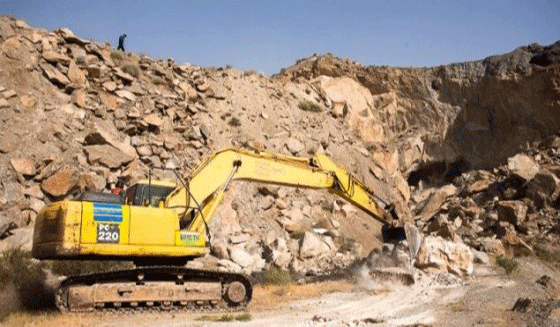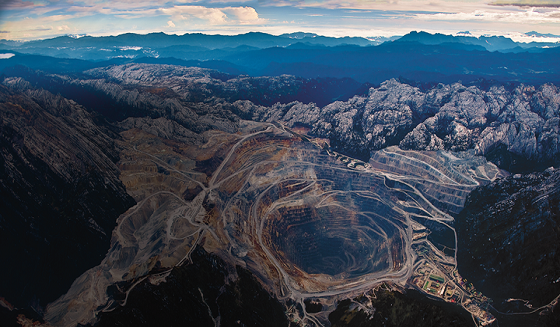Responding to a depressed mining market

The top ten issues facing miners in 2016
December 6, 2015
Mining sector in turmoil
December 13, 2015
Since the beginning of 2014, the World Bank’s Metals and Minerals index has fallen 29% and the Precious Metals index 11%. South Africa’s weighted average basket of commodities has also dropped 12% in rand terms despite its significant depreciation. The response has been carnage – Anglo American, for instance, announced its plans to shut 18 shafts, which will result in up to 50 000 job losses. Additionally, input costs, such as power and labour, are rising. The forces resulting from depressed commodity prices are thus putting mine managers under extreme pressure.
The immediate reactive response from most mines is to cut: cut costs, cut employee numbers, and cut output. The problem with this approach is that it drives operational instability in the short-term and a lack of preparedness when the cycle turns.
Operational strategy: A key survival tool
This reactive response approach shows that companies must prepare now, as commodity pricing is cyclic, so that they are ready and alert when the market turns.
Aaron Burton and Nikhil Datta, Partner and Managing Partner at Datta Burton and Associates (DBA), point out that large organisations have clearly articulated corporate strategies, but little attention is paid to their operating strategy at the asset and commodity level. This task is usually delegated to the operational units in the business, where meeting production and cost targets are the focus.
Formulate a pre-sponse, not a response
Most mines view strategy and planning as an exercise to find the right answer. Scenario planning is often talked about, but is not appropriately used.
Scenario planning is an essential tool for mine management to pre-empt poor market conditions; it prepares the mine by identifying the appropriate planned response (pre-sponse) and reduces the overall impact on the organisation.
Unfortunately, in most cases, mines respond incorrectly to bear markets, because their view remains myopic. A good example is the perennial insource versus the outsource question.
When the market recently dropped, one of DBA’s clients started to grapple with insourcing of supply, drilling and blasting, and fleet maintenance, in a rush to do it cheaper. However, they did not consider the functional excellence of these contractors that makes them more efficient. Moreover, contractors often pay employees less and insourcing adds layers and structures to the mine organogram.
The final decision may be wrong or right, but the more important view is that the decision, and its implications, should have already been evaluated during scenario planning. If insourcing is the correct decision when the market is weak, and helps you moves down the cost curve, why was it not done when the market was healthy?
Explore opportunities for major internal change
Many mines and organisations fail to take advantage of certain opportunities that present themselves during tough times. It is a natural reaction for companies to switch into a defensive mind-set, but there are massive opportunities in these times that any organisation can, and should, explore.
One of DBA’s clients used this time to implement large organisational changes. Their insight came from the response to Eskom’s load shedding. Eskom demanded a 10% reduction in power consumption from the company. Discussions on how to manage this involved revisiting an old initiative. This initiative had previously stalled because the business case showed the benefit was negligible. Due to the pressure of load shedding, it became an attractive solution.
Lower commodity prices may make the opportunity cost of a change significantly lower. These turbulent times may be a good time to make drastic changes, because loss in value isn’t as high. The aforementioned organisation has subsequently decided that this is the perfect opportunity to completely redesign their management operating system, unlocking volume and cost opportunities that were previously not feasible to pursue.
Explore opportunities to remove constraints
Alternative feed material sourcing options open during these times. Sourcing low grade gold containing waste may be less competitive, reducing competition for gold recyclers. Similarly, other by-products may be cheaper, such as chrome (from platinum waste) and uranium (from gold waste).
When times are tough, these agreements are expensive as processors compete to gain access. Mines should lock these contracts down now while they are available under favourable terms. Alternatively, logistics constraints, such as rail, also open up during these times. Stockpiling closer to customers during down times will help companies to move first when the market turns.
Keep spending capex (in the right places)
Mining is a long-term investment with a 50-year horizon. The current commodity price doesn’t dictate whether to sustain a 50-year asset or not. The business case for stay-in-business capital looks risky when the times are uncertain, but mines and large asset businesses take a long time to recover once it is stagnant. This means a mine will miss the next upturn, and the mine’s availability will suffer by pushing up costs. By conserving value on the downturn, mines actively destroy value for the upturn.
Capital can be reduced and portfolios should be reviewed, but mine management needs to think about the right places to spend the capital.
An alternative view
The main learning is that although the pressure is on, it is not all doom and gloom. These times require a special type of leadership and an alternative view and mind-set. Those that are best prepared for winter, do better come spring.
About Datta Burton & Associates
Datta Burton & Associates is a niche management consulting firm operating out of Australia and South Africa. The company’s partners and consultants have extensive experience delivering high-impact projects for some of the largest global resources and utilities firms. The consultancy’s strength lies in its ability to bring together powerful analysis, drive transformational change and leverage technology to help clients achieve sustainable results.
Source: www.mining.com


